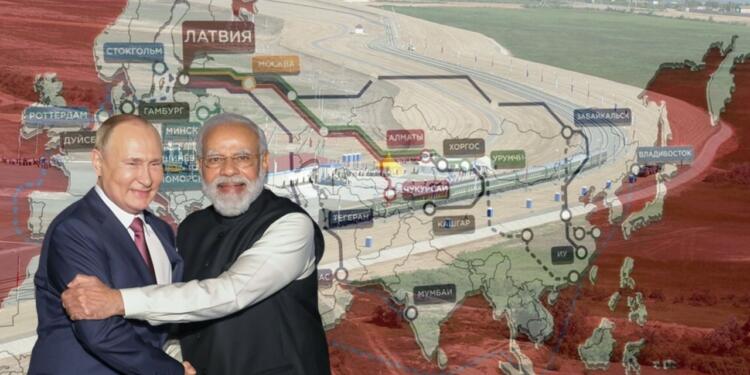Historically the only way out of European trade has been the Mediterranean Sea through the Suez Canal. The importance of the trade route and monopoly aligned with it has often resulted in the confrontation between East and West. So it was becoming very imperative to find an alternate route to effectively carry out trade among like-minded countries. For the realization of the goal, a multi-modal International North-South Transport Corridor (INSTC) was envisaged in the early 2000s and an agreement was signed on 16 May 2002 between Russia, Iran, and India. After about 20 years of the agreement, the ambitious freight trade route seems to be taking shape.
Russia to India via the Caspian Sea
According to a Russian Briefing report, Iran’s state-run shipping company has successfully completed the first transit of Russian goods to India, using the International North-South Transportation Corridor. The report suggests that goods originating in St Petersburg reached the Russian Caspian Sea port of Astrakhan through road. From there, it was shipped to Iran’s Anzali Caspian seaport. From there, it reached the Iranian Gulf port of Bandar Abbas via road transit and then, goods were shipped to India’s Jawaharlal Nehru Port in Mumbai. The total time taken in this freight journey was 24 days and it is expected to decrease significantly after the completion of the trans-Iranian railway project.
The significant improvement in this direction is attributed to the West’s disproportionate sanctions against both Iran and Russia in wake of the Iranian nuclear enrichment program and the Russian war in Ukraine.
Read More: The Russian Oilonomics and how Putin outfoxed the Western Sanctions
India’s win-win situation
Indian Federation of Freight Forwarders’ Associations’ report suggests that the freight route is expected to make the goods 30% cheaper and the time taken on the traditional route is expected to decrease by 40%.
The ground realization of this 7200 km long multi-mode network of ship, rail, and road will prove to be game-changing for India’s interest. On one hand, it will give Indian goods a direct reach to Central Asia bypassing Pakistan, and on the other overcoming the European-influenced Suez route will provide free movement of India-Russia freight. In a way, not only India-Russia trade will be immune from tangible or intangible sanctions of the West but will also give direct access to Indian goods to the Central Asian & Eurasian markets. For which India is already negotiating with Eurasian Economic Union for a Free Trade Agreement.
Moreover, the INSTC’s fully functional multi-modal corridor will fulfill India’s one of the most needed requirements. The uninterrupted and cheap supply of oil & gas from Russia which will help in breaking the monopoly of the US and Gulf in the crude oil market.
Read More: Russia hints at forming a new G8 with India
Economic prosperity has always been connected with the international stature of a country and international trade helps us to realize this ultimate goal. Moreover, in a world where the West does not hesitate in muscle-flexing its economic power and Gulf countries its energy power, it is imperative to find an alternative to this dual ill policy of the world.
Support TFI:
Support us to strengthen the ‘Right’ ideology of cultural nationalism by purchasing the best quality garments from TFI-STORE.COM































